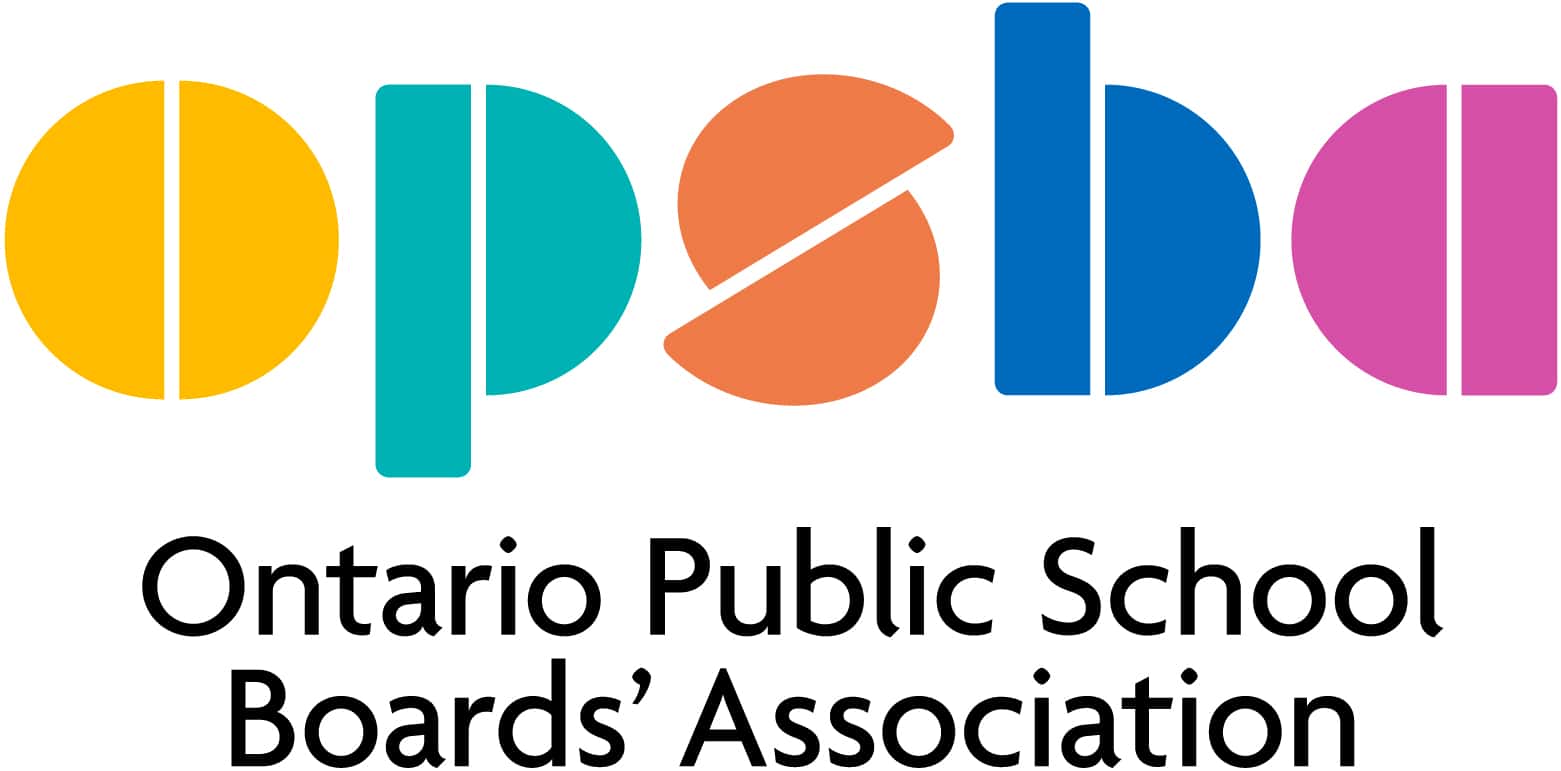Interview with Dr. Gillian Parekh
by OPSBA Staff
 Dr. Gillian Parekh is an Assistant Professor in the Faculty of Education at York University. Her primary research focus explores structural barriers in accessing quality education, particularly for students with disabilities. Throughout her PhD in critical disability studies and work as a research coordinator with the Toronto District School Board (TDSB), Parekh investigated trends and consequences associated with academic streaming and special education.
Dr. Gillian Parekh is an Assistant Professor in the Faculty of Education at York University. Her primary research focus explores structural barriers in accessing quality education, particularly for students with disabilities. Throughout her PhD in critical disability studies and work as a research coordinator with the Toronto District School Board (TDSB), Parekh investigated trends and consequences associated with academic streaming and special education.
Dr. Parekh recently spoke with OPSBA staff about her research and findings.
Q. What is the focus of your primary research?
The primary focus of my research is disability studies in education. I largely investigate system trends around access, placement and academic trajectories for students involved in special education and specialty programs as well as explore how schools respond to ability.
Q. Can you explain what it means to be gifted?
There are several ways in which giftedness is conceptualized. Some believe that giftedness is purely a result of high IQ, while others believe it is a result of a combination of personality and intellectual traits. Others, still, believe that the concept of giftedness is a social construct that conflates social and economic privilege with intelligence. In Ontario, the Ministry of Education defines giftedness as “An unusually advanced degree of general intellectual ability that requires differentiated learning experiences of a depth and breadth beyond those normally provided in the regular school program to satisfy the level of educational potential indicated” (Ministry of Education, 2017, A16). While this definition is fairly general, how giftedness is determined in children is often a point of contention.
Q. How are students identified as gifted?
Giftedness is often identified through different forms of intelligence testing. Many school boards in Ontario conduct universal screening in elementary school. Students who meet the criteria in the initial screening can then be referred to further individualized intelligence testing. Generally, if universal screening is not available, teachers can recommend that students be tested through their school board. Whether or not the school board provides the option for screening, parents can seek private, external testing for giftedness. However, intelligence testing has a long, murky history of racial, class and cultural bias – not to mention implications with eugenics. A recent study, conducted by Dr. Robert S Brown, Dr. Karen Robson and myself, shows that while students who are a combination of White, male and have parents with high status occupations are most likely to be identified as gifted, female and East Asian students are most likely to be among the very highest achievers. In fact, our study demonstrated a startling lack of relationship between the identification of giftedness in elementary school and very high achievement at the secondary level[1]. These findings trouble our conceptions of what “educational potential” means, how it is identified, and how it plays out in the public education system.
Q. School boards across the province often struggle with best approaches to educating gifted students. Why do you think that is?
Figuring out the best approaches to educating students identified as gifted is tricky. While many students accessing gifted programs may be seeking further support for other learning and behavioural considerations, giftedness, alone, is not marked by the presence of ‘need’ as compared to how other special education exceptionalities are defined. Data from the Toronto District School Board (TDSB) shows that students who are identified as gifted and taught in the regular program fare no better or worse academically than those taught in self-contained gifted programs[2]. In terms of graduation and post-secondary education access, both groups end up doing very well – notably better than the TDSB average. While many agree with the provision of additional supports for students who are likely to encounter barriers to achievement, the provision of a separate program for students who generally fare well can be seen as further advantaging an already advantaged group, particularly when enrichment can be delivered in the regular classroom. Research on best practice largely supports an inclusive approach to education, where all ability groups are taught together with meaningful, differentiated approaches to instruction and high expectations[3]. My sense is that, in discussions around giftedness, programming and setting become conflated. I have encountered studies that show a positive relationship between students in self-contained gifted programs and achievement. However, authors and researchers largely conclude that these findings are attributable to the enrichment, high expectations and programming opportunities embedded within gifted programs. I have not yet seen a study that convincingly identifies the ‘segregation’ of students as the key factor to academic success. If research is showing that enrichment, expectations and pedagogy are key features to enhancing achievement, I question why they cannot be made accessible to all students.
 Q. What are some of the barriers/obstacles to equitable access of students to gifted education programs?
Q. What are some of the barriers/obstacles to equitable access of students to gifted education programs?
I think the key obstacle is the identification process. Success on intelligence testing is often tied to social and economic privilege, particularly to the resources and opportunities parents and children have available to them. Additionally, I believe that there are damaging class and racial connotations wrapped up in conceptions of ‘smartness’ that even achievement cannot seem to debunk. An upcoming study with Dr. Robert S Brown, Samuel Zheng and myself revealed that, while keeping achievement constant, educators often recorded lower grades on learning skills for students who were racialized and whose parents had not themselves accessed university.
Q. Are gifted programs inherently unfair to other students?
This is a challenging question. Unlike other special education programs where research demonstrates a negative relationship with placement, academic achievement, sense of belonging, and future post-secondary education access, gifted programs do not seem to create any barriers for their students. However, research shows that the presence of specialty programs creates a social hierarchy within schools[4] which can negatively impact school climate and students’ sense of self. Years ago, I conducted a study on students’ experiences of belonging and exclusion in school[5]. Students who were identified as gifted and students who were placed in gifted programs were far more likely than the TDSB average to report feeling accepted, safe, welcome and included in school. They also were more likely to experience a sense of shared power in terms of contributing and participating in class. The converse was true for students identified with a learning disability or mild intellectual ability or for students who were placed in special education classes or schools. While the goal is to ensure that all students experience a sense of belonging and safety, we need to query how organizing students into separate groups based on the perceived presence or absence of socially valued traits impacts students’ experiences of schooling.
Q. Much like other specialty programs (e.g. French Immersion or Arts schools), gifted programs are highly desired by parents. What is the appeal of programs like these for parents?
I think the appeal assumes that access to specialty or gifted programs presents significant in-school and post-graduation opportunities. Interestingly, in town hall discussions around giftedness and placement of gifted programs, some parents described not only the academic benefits, but also the networking opportunities programs like ‘gifted’ afforded their children. As the data shows, children offered placement in gifted, specialty arts and French Immersion programs are more likely to have access to both parents, come from homes with higher incomes, and have parents who have university education. Therefore, parents of students identified as gifted or talented are more likely to be in position to navigate the school system and advocate for access to more exclusive specialty programs[6]. As a result, the data also shows that when students are sorted and organized based upon such perceptions of ability, perceptions that can often be linked to social and economic privilege, a replication of broader social, cultural and economic divisions emerges[7].
Q. Based on what you’ve learned from your research, can equity of access to gifted programs be achieved for all students. If so, how? If not, why not?
I don’t believe so. I don’t believe the intention of gifted programs is to be accessible to all students. By their very nature, they are exclusive, and like other specialty programs, are intended to only include students who meet their entrance criteria. So long as the practice of identifying giftedness remains tied to the practice of intelligence testing, I believe gifted programs will remain an organizational feature of public education that contributes to the hierarchical stratification of privilege within schools.
Reference:
[1] Link to Parekh, Brown & Robson (2018) study on giftedness: http://cjds.uwaterloo.ca/index.php/cjds/article/view/421
[2] Links to TDSB studies: http://www.tdsb.on.ca/Portals/research/docs/reports/SpecEdStructuralOverviewStudentDemo.pdf
http://www.tdsb.on.ca/Portals/research/docs/reports/SpecialEducation2013-14Factsheet.pdf
[3] Link to Mitchell (2010) review: https://www.educationcounts.govt.nz/__data/assets/pdf_file/0016/86011/Mitchell-Review-Final.pdf
[4]Link to Gaztambide-Fernández & Parekh, 2017: https://epaa.asu.edu/ojs/article/view/2716/1897
[5]Link to Parekh (2014) study on students’ experience of belonging: https://www.academia.edu/10997943/Students_Experiences_of_Belonging_in_School
[6] Link to Gaztambide-Fernández, Saifer & Desai (2013) study: https://www.tandfonline.com/doi/abs/10.1080/02783193.2013.766964?journalCode=uror20
[7] Link to Parekh (2013) Structured Pathways study: http://www.tdsb.on.ca/Portals/Ward11/docs/StructuredPathways.pdf
| Previous Article | Next Article |

